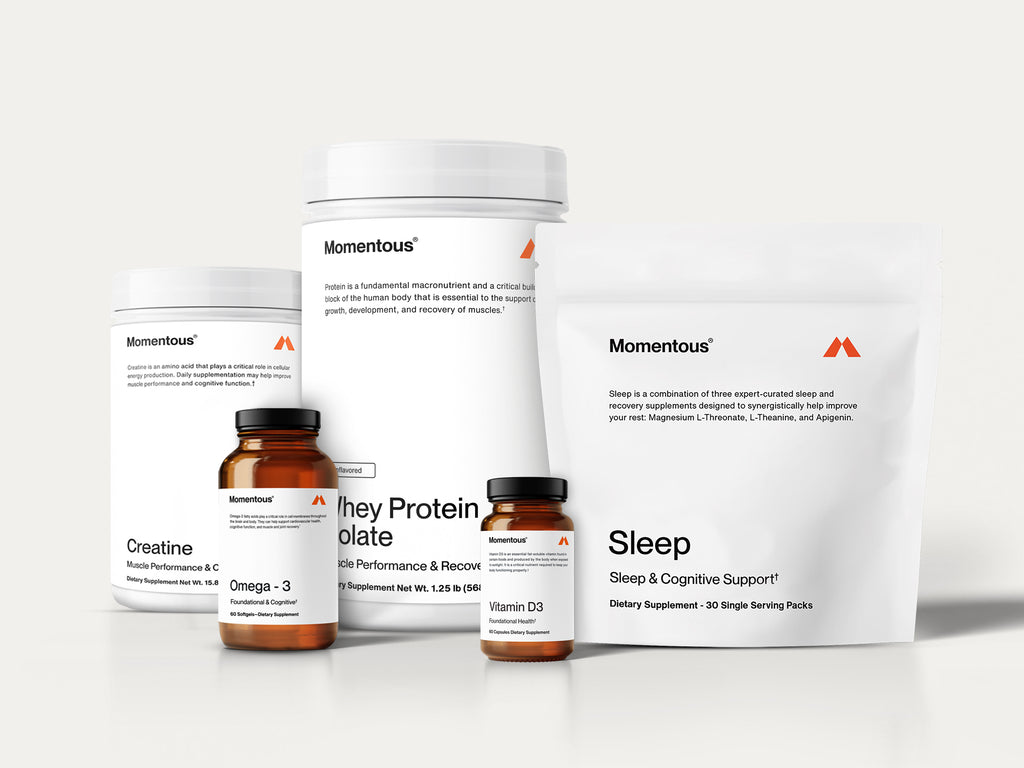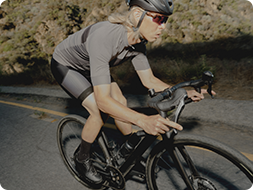Delivers sodium bicarbonate through the skin to buffer lactic acid
There are dozens of different supplements on the market, but according to a position paper by the International Olympic Committee (IOC), there are five kinds that have an abundance of evidence-based efficacy to warrant recommendation for use by athletes.[1] Most athletes and coaches are at least somewhat familiar with the first four: the stimulant effects of caffeine, how creatine supports the ATP-CP energy system, why nitrates act as a vasodilator, and how beta alanine helps maintain pH in muscles. But despite having been studied for over 50 years, less understand the performance and recovery benefits of supplemental sodium bicarbonate. That’s what we’ll focus on in this article.
What is Sodium Bicarbonate and How Does It Work in My Body When I Exercise?
Sodium bicarbonate is a simple, naturally occurring electrolyte that your body uses to regulate pH. When you train hard, you release more hydrogen (H+) ions that tilt your acid/alkaline balance in favor of the former. When this occurs, muscle function can become compromised. Sodium bicarbonate acts as a buffer, neutralizing the excess H+ ions.
There are dozens of different supplements on the market, but according to a position paper by the International Olympic Committee (IOC), there are five kinds that have an abundance of evidence-based efficacy to warrant recommendation for use by athletes.[1] Most athletes and coaches are at least somewhat familiar with the first four: the stimulant effects of caffeine, how creatine supports the ATP-CP energy system, why nitrates act as a vasodilator, and how beta alanine helps maintain pH in muscles. But despite having been studied for over 50 years, less understand the performance and recovery benefits of supplemental sodium bicarbonate. That’s what we’ll focus on in this article.
What is Sodium Bicarbonate and How Does It Work in My Body When I Exercise?
Sodium bicarbonate is a simple, naturally occurring electrolyte that your body uses to regulate pH. When you train hard, you release more hydrogen (H+) ions that tilt your acid/alkaline balance in favor of the former. When this occurs, muscle function can become compromised. Sodium bicarbonate acts as a buffer, neutralizing the excess H+ ions.
How Does Sodium Bicarbonate Improve Exercise Performance?
If you take supplemental sodium bicarbonate, it acts as a receptor for the increased number of hydrogen ions that you create in response to muscular load and exertion. Doing so allows your body to start using lactate as an additional energy substrate so that you can keep going harder and faster for longer. Another benefit of supplementing with sodium bicarbonate is that doing so increases the amount of sodium in your body so that you retain more fluid. When your sodium status is impacted in this way, you’re less susceptible to the ill effects of dehydration and will be better able to preserve peak performance.
What Role Can Sodium Bicarbonate Play in Recovery?
When you train or compete, your body is subjected to two kinds of stressor or load. The first is mechanical and results from the forces you create and absorb through acute and chronic loading. The second is oxidative damage from ROS, which is a kind of hydrogen ion. The theory is that over time, this can lead to inflammation, which might press on nerves and increase post-exercise soreness. Sodium bicarbonate can mitigate the effects of this by buffering the hydrogen ions. In one study, Mark Kern, professor of exercise and nutritional sciences at San Diego State University found that a group of semi-pro cyclists and triathletes who used PR Lotion – a rich source of sodium bicarbonate – reported feeling 53 percent less muscle soreness the day after an intense training session.[2]
What are the Drawbacks of Ingesting Sodium Bicarbonate?
Most of the studies conducted with athletes and sodium bicarbonate have focused on them ingesting it orally. The drawback to this method is that doing so can lead to a wide range of gastric issues, ranging from milder symptoms like gas and bloating to more severe ones such as vomiting and diarrhea. If you’ve ever done the experiment of pouring white vinegar on baking soda (or have helped your kids perform it for a homework project), you’ll likely recall how this potent combination creates a kind of volcano effect.
Something similar happens if you swallow bicarbonate of soda. It reacts with your stomach acid to send gas bubbles up and down, leading to the side effects just mentioned. This is where a product like PR Lotion comes in, as it enables your body to readily absorb bicarbonate of soda and take advantage of its performance and recovery benefits without the GI distress you’d likely experience from taking it orally.
Who’s Using this Supplement and What Advantages are They Getting?
A broad range of athletes are using PR Lotion daily. At the elite sport level, professional hockey teams like the Stanley Cup-winning St. Louis Blues and NFL teams such as the LA Rams are experiencing how well transdermal sodium bicarbonate supplementation works for power athletes. Reggie Scott, director of sports medicine and performance for the Rams, said, “PR Lotion improves practice performance and leads to quality outcomes in a game and reduced post-game muscle soreness and fatigue.”[3]
Endurance athletes are also reaping the benefits of PR Lotion. Eight-time world mountain running champion Joe Gray said, “I can train at a higher level” when using it.[4] 52 world record, Olympic, and world championship performances have been achieved by athletes utilizing PR Lotion. This isn’t to say that such a supplement is only for elite athletes. More than 20,000 recreational runners, cyclists, and other competitors have recorded PRs while using PR Lotion. From the world-beating athlete to the weekend warrior, it can support everyone who’s trying to maximize their performance potential and become their best self.
How Long Will It Take Me to Notice the Benefits?
While the effects of transdermal sodium bicarbonate use are immediate, most people tend to notice its positive impact on the third use. Before this, you might chalk any performance gains up to the fact that you’re in great shape, or attribute better recovery to doing a shorter or less intense workout. But by the time you get to the third use, it should become clear that PR Lotion is playing a significant part in such advantages.
Is Long-Term Use Better or Can I Just Use It on Race/Game Day?
While occasional use can still be beneficial, there is research to suggest that more continual sodium bicarbonate usage improves performance and recovery to a greater degree. Kern’s study demonstrated that athletes who used PR Lotion daily unlocked 16% more power and increased blood lactate by 11%, while another trial conducted by Source Endurance concluded that it helped increase time to exhaustion in high intensity intervals by 25%.[5]
Like any supplement, PR Lotion is not a magic bullet or cure-all. But if used regularly 30 minutes before training or competition, it can help you perform at your peak and bounce back quicker between sessions so you can maximize your training gains.
Resources:
[1] Ronald J Maughan et al, “IOC Consensus Statement: Dietary Supplements and the High-Performance Athlete,” The BMJ, March 14, 2018, available online at https://www.ncbi.nlm.nih.gov/pmc/articles/PMC5867441/.
[2] Mark Kern et al, “Double-Blind, Placebo Controlled, Randomized Crossover Pilot Study Evaluating The Impacts Of Sodium Bicarbonate in a Transdermal Delivery System on Physiological Parameters and Exercise Performance,” May 2018, available online at https://journals.lww.com/acsm-msse/Fulltext/2018/05001/Double_blind,_Placebo_Controlled,_Randomized.1967.aspx.
[3] “The Rams: Training With PR Lotion,” Amp Human, https://amphuman.com/blogs/news/how-pr-lotion-powered-the-l-a-rams-super-bowl-run.
[4] “Results,” Amp Human, available online at https://amphuman.com/pages/results.
[5] “PR Lotion Significantly Improves High-Intensity Interval Performance,” Source Endurance, available online at https://firebasestorage.googleapis.com/v0/b/amphumanperformance-site.appspot.com/o/papers%2FSource_Endurance_Amp_Study_v5.pdf?alt=media&token=45e645d6-d3f0-4a8f-8d1f-be510ae627cd.










